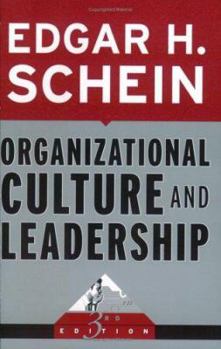Organizational Culture and Leadership
Select Format
Select Condition 
Book Overview
In this third edition of his classic book, Edgar Schein shows how to transform the abstract concept of culture into a practical tool that managers and students can use to understand the dynamics of organizations and change. Organizational pioneer Schein updates his influential understanding of culture--what it is, how it is created, how it evolves, and how it can be changed. Focusing on today's business realities, Schein draws on a wide range of contemporary research to redefine culture, offers new information on the topic of occupational cultures, and demonstrates the crucial role leaders play in successfully applying the principles of culture to achieve organizational goals. He also tackles the complex question of how an existing culture can be changed--one of the toughest challenges of leadership. The result is a vital resource for understanding and practicing organizational effectiveness.
Format:Paperback
Language:English
ISBN:0787975974
ISBN13:9780787975975
Release Date:September 2004
Publisher:Jossey-Bass
Length:437 Pages
Weight:1.26 lbs.
Dimensions:1.3" x 6.3" x 9.0"














